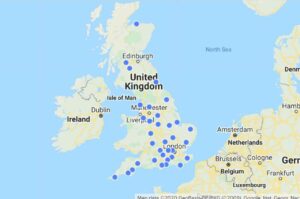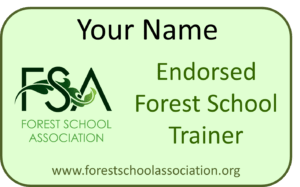Guidance for qualified Forest School practitioners using Temporary Rope Structures for play at Forest School
Prepared by Richard Irvine and the team of FSA Endorsed Forest School Trainers – November 2023
Scope of the guidance
This guidance deals with elements constructed from ropes, nets and webbing – including slacklines – with the possible addition of climbing or sailing hardware such as ratchets, carabiners, cable, pulleys, etc.
Disclaimer: The information provided in this article, the Forest School Association’s guidance on creating and maintaining low ropes courses, is intended for general informational purposes only. It is not intended as legal, safety or professional advice. Forest School leaders and other individuals should use their discretion and seek professional advice where necessary. The Forest School Association accepts no liability for any actions taken based on the information provided in this guidance document.
Background
A play audit of a woodland area will reveal many natural elements that lend themselves to physical play and movement such as balancing, bouncing, jumping, sliding, swinging, etc. An observant Forest School practitioner might identify a play interest or need that could be enhanced by the addition or construction of elements that are not already present in the woodland.
Ropes and poles have long been used by youth organisations such as the Scouts (pioneering) and outdoor adventurous activity providers to improvise play and challenge equipment and as a tool for personal development and group problem solving. Techniques and equipment have improved over the decades, with low and high courses becoming standard in many outdoor education centres, leading to the current trend for high ropes courses, treetop trails and zip wires as consumer recreational experiences.
Definitions and legal considerations
- Low rope elements are rarely more than a metre above the ground. High ropes activities generally require significant PPE, climbing equipment and belays.
- Many of these structures and activities have become standardised under European Standard EN 15567-2, which covers high and low rope courses, both permanent and temporary. A detailed guide for the UK is available from the European Ropes Course Association (ERCA) https://www.erca.uk/index.php/en/publications/documents?download=172:aaiac-uk-ropes-course-guide-2021
Under these European Standards:
- A permanent ropes course is a facility installed for more than seven days on the same site
- A temporary ropes course is a facility that is not a mobile ropes course and is installed for a maximum of 7 days
Full webpage and PDF doc available to members only




